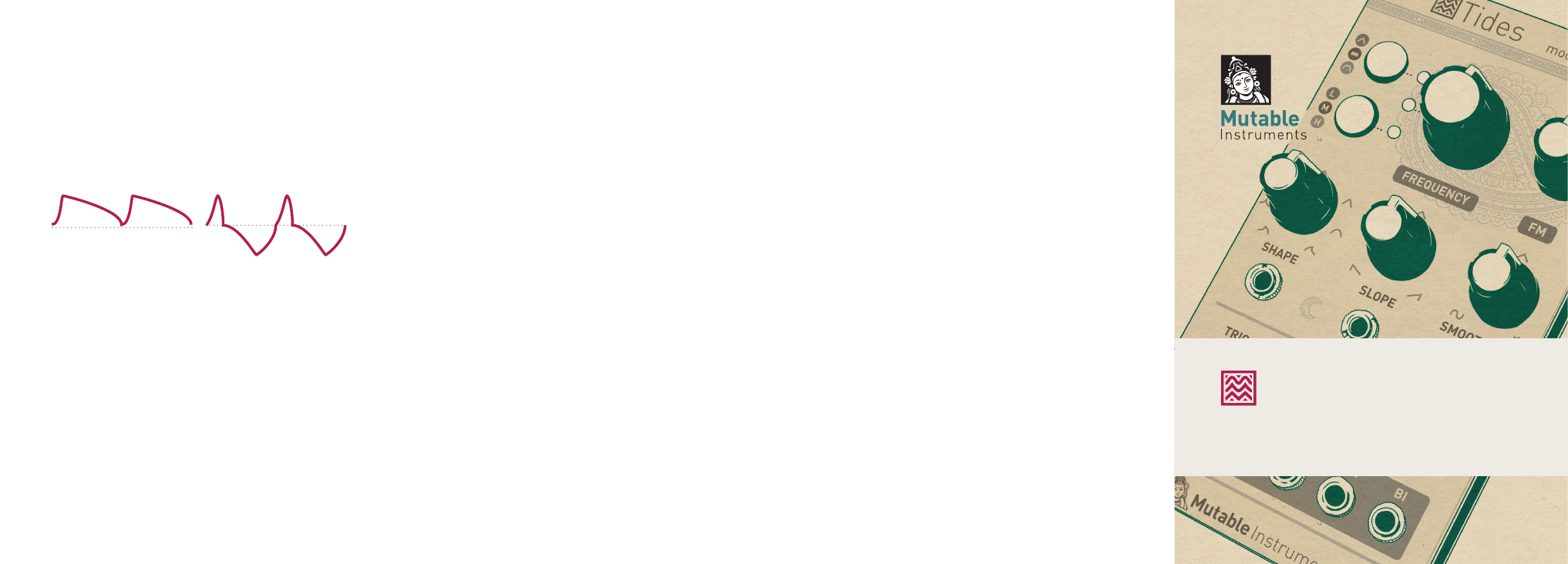Mutable Instruments Tides User Manual
Tides, Tidal modulator about unipolar and bipolar outputs, Pll mode

Tides
Tidal modulator
About unipolar and bipolar outputs
The bipolar output is not a merely scaled and off-
set version of the unipolar output! It is made of two
bumps, a positive one occurring during the attack,
and a negative one occurring during the release.
PLL mode
Hold the frequency range (B) button for 1s. Tides
enters the PLL mode.
In PLL mode, a signal must be provided to the
CLOCK input. Tides will adjust its output frequen-
cy to match the frequency of this signal or a multi-
ple/division of it as set by the Frequency knob.
Hold the frequency range (B) button again to leave
the PLL mode.
Tips and tricks:
•
Tides works wonders as a master modulator for
a classic analog VCO.
•
When using Tides as an oscillator for bass
sounds, try both the unipolar and bipolar out-
puts; and the medium and high ranges - they all
sound different.
•
Use the PLL mode to create just-intonation mel-
odies on top of a drone sent to the CLOCK input.
•
A different flavor of sync sounds can be ob-
tained by patching a PWM or square source into
the FREEZE input.
•
Use the wavefolder on a low-frequency envelope
to create bumps and bounces.
•
Use the PLL mode, and trigger the CLOCK and
TRIG inputs from a rhythmic sequencer.
•
In typical Buchla fashion, the low/high tide out-
puts can be used to trigger another module to
chain envelopes and create complex shapes.
Calibration
1. Connect a patch cable to the FM input. Leave
the other end of the cable unplugged (this
prevents the normalling to +/-1 semitone to be
activated).
2. Connect a patch cable to the Level input. Leave
the other end of the cable unplugged (this
prevents the normalling to full amplitude to be
activated).
3. Connect a MIDI>CV interface or precision volt-
age source to the V/Oct input.
4. Hold the Mode switch (A) for one second. All
LEDs are lit in yellow.
5. Play a C2 note, or send a 1V voltage from your
CV source.
6. Press the mode switch (A). All LEDs are lit in
green.
7. Play a C4 note, or send a 3V voltage from your
CV source.
8. Press the mode switch (A).
The module is now calibrated for accurate V/Oct
operation!
Unipolar
Bipolar
